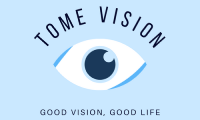Eye Allergies: Common Triggers and Remedies
Introduction:
Many people suffer from eye allergies, a condition that causes itching, redness, and swelling of the eyes. While allergies can affect any part of the body, the eyes are particularly sensitive and susceptible to allergens in the air. In this article, we will explore the most common triggers of eye allergies and provide some helpful remedies to alleviate the symptoms.
Common Triggers:
1. Pollen:
Pollen is one of the most common triggers for eye allergies, especially during spring and summer. Tiny particles released by trees, grasses, and weeds can easily enter the eyes, leading to irritation and an allergic reaction. To minimize exposure to pollen, keep windows closed during peak pollen hours, use air filters in your home, and avoid outdoor activities when pollen counts are high.
2. Dust Mites:
Dust mites are microscopic creatures that thrive in warm and humid environments, such as bedding, upholstery, and carpets. These tiny creatures produce waste particles that can cause eye allergies. Regularly vacuuming your home, washing bedding in hot water, and using allergen-proof covers for pillows and mattresses can help reduce the presence of dust mites and alleviate allergy symptoms.
3. Pet Dander:
If you’re an animal lover but struggle with eye allergies, pet dander might be the culprit. It’s not actually the fur that triggers the allergic reaction but rather the proteins present in an animal’s skin cells, saliva, and urine. To minimize exposure to pet dander, keep your pets out of your bedroom, regularly groom and bathe them, and consider using air purifiers to reduce allergens in the air.
4. Mold:
Mold is a type of fungus that thrives in damp areas such as bathrooms, basements, and kitchens. Spores released by mold can trigger eye allergies, causing redness, itching, and watery eyes. To prevent mold growth, ensure proper ventilation in these areas, fix any leaks promptly, and clean mold-prone areas regularly. Use a dehumidifier in areas with high humidity to keep mold at bay.
Remedies:
1. Cold Compress:
A cold compress can provide immediate relief for itchy and swollen eyes. Simply wrap a few ice cubes in a clean cloth and place it gently over your closed eyes for 10-15 minutes. The cold temperature helps reduce inflammation and constricts blood vessels, thereby reducing redness.
2. Artificial Tears:
Using artificial tears or lubricating eye drops can help alleviate dryness and itching associated with eye allergies. These drops rinse allergens from the eyes and reduce inflammation. Look for preservative-free drops, and use them as needed or as recommended by your doctor.
3. Antihistamines:
Over-the-counter oral antihistamines, such as cetirizine or loratadine, can provide relief from redness and itching caused by eye allergies. Additionally, there are antihistamine eye drops available that provide targeted relief for allergy symptoms. However, it is always advisable to consult a healthcare professional before using any medication.
Conclusion:
Eye allergies can be a bothersome condition, but with proper understanding of the common triggers and effective remedies, you can minimize their impact on your daily life. By taking preventive measures to reduce exposure to allergens and using simple remedies like cold compresses, lubricating eye drops, or antihistamines, you can find relief from eye allergy symptoms and enjoy better eye health overall. Remember, if symptoms persist or worsen, it is important to seek the advice of a medical professional.
